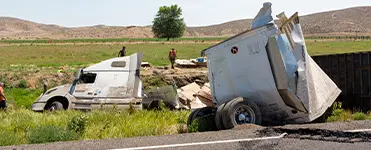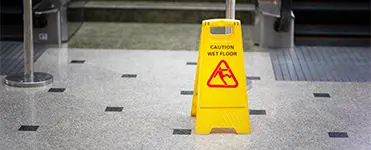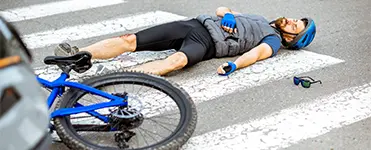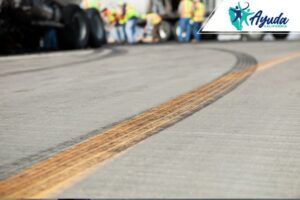Do Pedestrians Always Have the Right of Way in California?
When it comes to road safety, the well-being of pedestrians remains a top priority. In California, the widely held belief is that pedestrians always have the right of way, making it a common assumption among both walkers and drivers. However, like many aspects of traffic regulations, the reality is more nuanced than this blanket statement suggests.
Unfortunately, some right of way rules may not always be observed, leading to catastrophic injuries or death. The Governors Highway Safety Association (GHSA) published a preliminary report in 2022 of pedestrian fatalities per state. California ranked first in the report for the highest number of pedestrian fatality rates in the first six months, with 504 recorded deaths.
In this blog we will discuss:
- Do pedestrians have the right of way in California?
- When pedestrians DO NOT have the right of way
- California pedestrian laws
- Importance of pedestrian safety and awareness
Do Pedestrians Have the Right of Way in California?
Yes, pedestrians generally have the right of way in California, as stated in the California Vehicle Code (CVC). According to CVC Section 21950, motor vehicle drivers must yield the right of way to pedestrians crossing the roadway within any marked crosswalk or any unmarked crosswalk at an intersection.
In California, the right-of-way rules are designed to prioritize pedestrian safety and protect individuals on foot. Here are some key points to expand on the topic:
Marked Crosswalks
According to the California Vehicle Code, drivers must yield the right of way to pedestrians who are within any marked crosswalk. Marked crosswalks are typically indicated by painted lines on the road and may be accompanied by traffic signals or signs. When pedestrians are crossing at a marked pedestrian crosswalk, drivers have a legal duty to come to a complete stop and allow them to cross safely.
Unmarked Crosswalks
Pedestrians also have the right of way when crossing at unmarked crosswalks at intersections. An unmarked crosswalk is essentially an extension of the sidewalk across the roadway, connecting opposite corners of an intersection. Drivers are obligated to yield to pedestrians who are within or approaching an unmarked crossing at an intersection.
Crosswalks at an Intersection With Traffic Lights
At intersections equipped with traffic signals, pedestrians must generally follow the pedestrian signal indications for crossing. When the “Walk” signal is displayed, pedestrians have the right of way to cross within the marked or unmarked crosswalk. However, they should not start crossing if the signal is already showing a flashing or solid “Don’t Walk” symbol.
Crossing Outside of Crosswalks
California law also addresses situations when pedestrians cross the roadway outside marked or unmarked crosswalks. In such cases, pedestrians are required to yield the right of way to vehicles. However, this does not absolve drivers from exercising caution and avoiding any actions that may endanger pedestrians.
Duties of Drivers
In addition to yielding the right of way, drivers have a duty of care to exercise caution to avoid colliding with pedestrians. They should maintain a safe and reasonable speed, remain attentive, and be prepared to stop if a pedestrian is crossing the roadway. Failure to yield to pedestrians can result in traffic violations, fines, and potential legal consequences.
When Don’t Pedestrians Have the Right of Way?
While pedestrians generally have the right of way in California, there are certain circumstances where they do not automatically possess priority. Here are a few situations in which pedestrians may NOT have the right of way in California:
Jaywalking
Pedestrians are required to cross the roadway within marked crosswalks whenever they are available. If a pedestrian chooses to cross the road outside of a marked or unmarked crosswalk, they must yield the right of way to vehicles. Jaywalking, or crossing the street at a point other than a designated crossing, does not grant pedestrians the right of way.
Crossing against a signal
Pedestrians must follow traffic crossing signals at signalized intersections. If the pedestrian signal is displaying a solid or flashing “Don’t Walk” symbol, pedestrians should not start crossing the road. Crossing against a signal when it is not indicating the right of way is prohibited and can put pedestrians at risk.
Walking/Running into traffic
Pedestrians should always walk or run facing the traffic flow on the left side of the roadway. This allows them to see oncoming vehicles and react accordingly. When pedestrians walk or run into the flow of traffic, they must yield the right of way to vehicles since they are not following the established rules for pedestrians.
Interfering with traffic
Pedestrians are not permitted to unnecessarily obstruct or interfere with the normal flow of traffic. This includes stepping out into the roadway and causing vehicles to stop abruptly or taking actions that could result in a hazardous situation. Pedestrians should exercise caution and avoid disrupting the smooth movement of vehicles.
Emergency vehicles
When emergency vehicles, such as police cars, fire trucks, or ambulances, are approaching with their lights flashing and sirens blaring, pedestrians are required to yield the right of way. Give priority to emergency vehicles and clear the way to ensure prompt response to emergencies.
Remember, although pedestrians may not have the right of way in these particular situations, drivers should always exercise caution and strive to avoid any collisions or harm to pedestrians. It is vital for both pedestrians and drivers to understand their responsibilities and respect the rules of the road to maintain a safe and harmonious traffic environment.
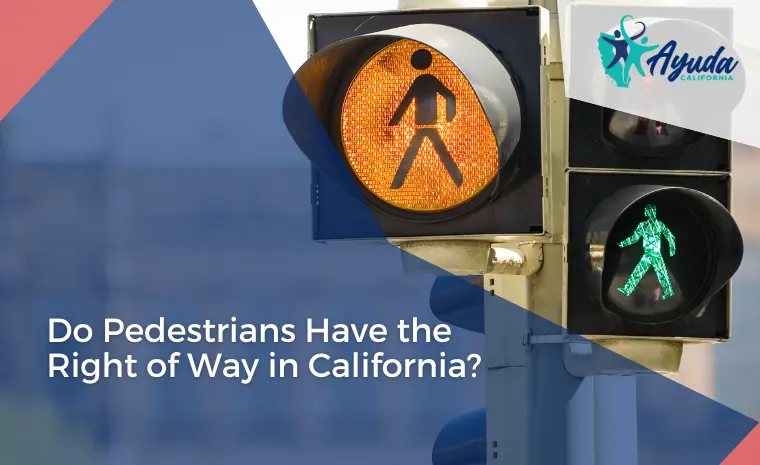
California Pedestrian Laws
Pedestrian right of way laws in California are designed to ensure the safety and well-being of individuals walking or running on the roadways.
As previously mentioned, California Vehicle Code section 21950 states that pedestrians do have the right of way when crossing the street at an intersection on a marked or unmarked crosswalk. This means that drivers must slow down and give way to pedestrians to enable them to cross the street.
There are exceptions to California’s rule allowing pedestrians to cross without a marked crosswalk. Under California Vehicle Code Section 21955 pedestrians were required to use a crosswalk when crossing between two adjacent intersections that are controlled by traffic lights.
However, California’s Freedom to Walk Act gives pedestrians the right to cross without a crosswalk when it is reasonably safe to do so. Pedestrians should refrain from engaging in hazardous actions, such as abruptly crossing the road in front of a vehicle or obstructing traffic without a valid reason.
When the pedestrian signal is not working or doesn’t exist, individuals walking should approach the intersection as if it were a four-way stop and proceed with caution.
Section 21970 of California’s Vehicle Code states that no person may stop a vehicle unnecessarily in a manner that causes the vehicle to block a marked or unmarked crosswalk or sidewalk.
Importance of Pedestrian Safety and Awareness
Pedestrian safety and awareness are of paramount importance in promoting the well-being of individuals who walk or run on roadways.
Preventing Accidents and Injuries
Pedestrians are among the most vulnerable road users. Promoting the safety of pedestrians helps reduce the risk of accidents and injuries. By increasing awareness and adherence to safety guidelines, we can minimize the number of pedestrian collisions, protecting both pedestrians and drivers.
Preserving Lives
Pedestrian accidents can have devastating consequences, leading to severe injuries and even loss of life. Putting a focus on pedestrian safety through awareness campaigns, education, and enforcement can save lives and prevent the immeasurable pain and suffering caused by pedestrian accidents.
Encouraging Active Transportation
Promoting pedestrian safety creates an environment that encourages walking and active transportation. Safe pedestrian infrastructure, such as well-maintained sidewalks, marked pedestrian crosswalks, and pedestrian-friendly design, fosters healthier lifestyles, reduces traffic congestion, and decreases environmental impact.
Inclusive Communities
Pedestrian safety is a crucial component of creating inclusive communities. People of all ages, abilities, and backgrounds should be able to navigate public spaces safely. By implementing safety measures and raising awareness, we can ensure that pedestrians feel comfortable and secure in their daily travels.
Enhancing Livability
Pedestrian-friendly environments contribute to the overall livability of cities and neighborhoods. Care for pedestrian safety creates spaces that are more inviting, vibrant, and conducive to social interaction. This, in turn, boosts community cohesion and improves the quality of life for residents.
Economic Benefits
Pedestrian safe and walkable communities have the potential to stimulate economic growth. Pedestrian-friendly areas often attract more foot traffic, leading to increased business activity, improved property values, and enhance local economies.
Education and Behavior Change
Promoting pedestrian safety fosters a culture of responsible behavior among both pedestrians and drivers. By educating individuals on laws for pedestrians, safe crossing techniques, and the importance of vigilance, we can foster a collective commitment to creating a safer road environment.
Injured in a Pedestrian Accident? Hire an Experienced Pedestrian Accident Lawyer Today!
Pedestrian accident victims may experience emotional distress and serious physical injuries following an accident. However, if your pedestrian accident was due to the actions of a negligent party, you may be eligible to file a personal injury claim and recover financial compensation for your injuries and damages.
To file a successful claim, it is crucial that you seek legal representation from a knowledgeable pedestrian accident attorney. At Ayuda California, we understand the difficulty of handling a pedestrian accident claim.
Not only will we handle all the complexities of your case, but we will also ensure that you receive the medical care you need and the compensation you deserve.
Contact us at (844) 865-0721 for a free case consultation. We are available 24/7! We speak English, Spanish, and Filipino.






